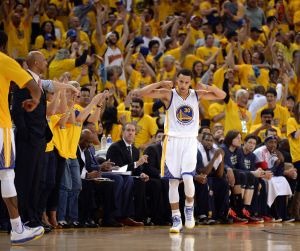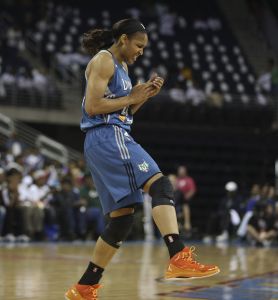
Men’s sports take up 92 percent of airtime. Women’s sports only take up five percent.
From the beginning of time men and women have always been in comparison, no matter what the topic may be about. Over the years women have struggled to find their balance but now since the uprising of so many different female athletes dominating the field, it is hard for someone to say that the two genders are in competition.
A new study from the Eurekalert recently appeared that claims boys are “naturally stronger and faster starting from very young age” is false.
Researchers from Indiana University analyzed data from more then 1.9 million swim meets. The meets study shows that all 50-yard freestyle events included both boys and girls between six and 19.
Researchers found that there was no difference between 11 and 12 year-old boys and girls. However, they found that the ages six and eight year-olds have negligible differences in their developmental pace.
This particular study does not indicate that researches have found proven facts that boys are more athletic then girls but they did indicate that there is a big gap between how a six year-old girl compared to a 12 year-old girls will have a complete mussel difference. According to the report from Eurekalert statistics from nielsen.com, reports have also shown that during the Olympics that 56 percent of women watch the Olympics and 44 percent of men make up the other half. Compared to the super bowl where it is indicated that 54 percent of men watch it while the women cover the other 46 percent.
Generally, in the media, women’s sports are not covered and underrepresented. In the first six weeks of television, according to LA84.org. men’s sports received 92 percent of the airtime. A part from women’s sports which only received five percent of air time and gender-neutral topics three percent.

LA84. org also referenced another issue that in the sport of basketball women athletes are often referred to by their first name 31 times, men on the other hand 19 times.
Among men all 19 instances of first-name use occurred in discussing men of color. First names never were used in discussions of white male basketball players.
Sophomore, Kenia Rodriguez says, that she thinks it is very biased and very unfair that women do not get as much coverage as men. Especially since women have done so much with it in the last two decades.
“It’s very one- sided when it comes to women,” Rodriguez said. “I don’t think it is fair that women’s games all seem to get less coverage compared to men.”
Due to low coverage of regular season games broadcasted on television, the final four coverage amounted to three women’s games and three men’s games, including introductions/lead-ins and halftime shows.
Types and levels of technical production as well as visual and verbal framing of the contests and the athletes were examined.
“I think the issue is because people feel like the games aren’t entertaining and as hype as the boys,” Vanessa Charlot, communications major, said. “If people were to show up at the female games it would be a lot better.”
“Young men and women always have different views and perspectives of what they think is right,” Deryl Bagwell, sophomore, said. “That is the only reason why it may seem that men get more coverage is because for us boys our athleticism is very different than girls, which draws more attention to us.”


